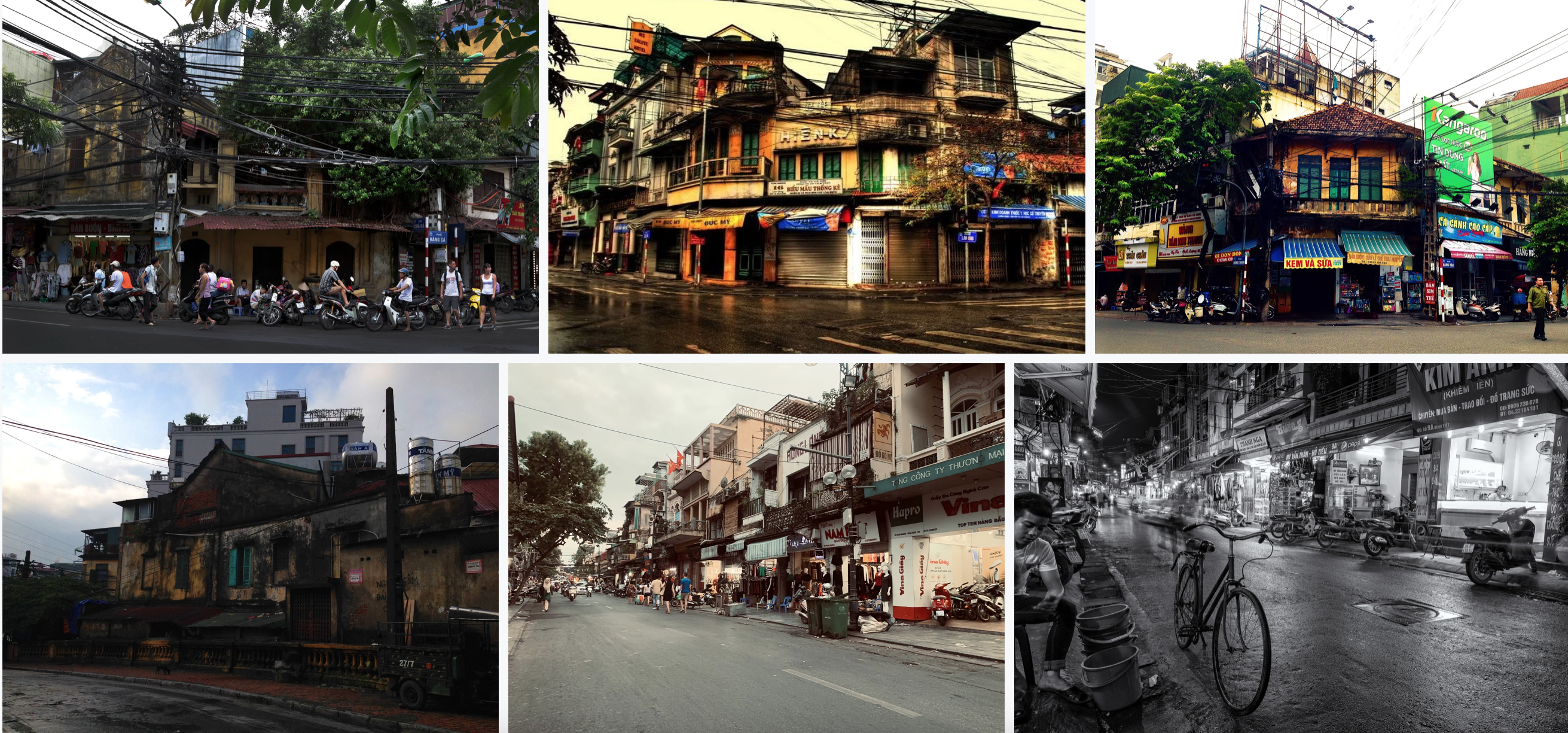Hanoi: Find out all about the Capital of Vietnam
Vietnam Capital, steeped in history, pulsating with life, bubbling with commerce, modern day’s buzzing with motorbikes and rich in exotic scents. Hanoi is a captivating capital city and that Vietnamese are proud of its past and present.
Hanoi has become one of the most beguiling cities in all Asia. A city with lovely landscape of lakes, shaded boulevards, verdant public parks, colonial French houses plus astounding modern skyscrapers raising up one after another.
Unlike past, which Vietnam had separate capital for for south and north. Hanoi personifies the spirit of historic Vietnam in the temples, monuments and pockets of ancient culture along the narrow streets of the Old Quarter, yet perfectly reflects the rapid changes sweeping the country as Hanoian yuppies sip cappuccinos in roadside cafes and compare business ideas.
Hanoi, Vietnam’s cultural capital, offers a wealth of wonderful sights and experiences. What better way to include them on, one of our Vietnam Private Tours
Orientation & Geography of Hanoi, Vietnam's Capital
- Hanoi Capital of Vietnam:
- Area: Over 913 square km
- Population of Hanoi in 2024: 8.5 million (5.6 million in the inner part and 2.9 million in the suburbs of the city)
Hanoi was capital of Vietnam from 1010 to 1802, and again, has been since 1945, replacing Hue which was the capital during the last imperial dynasty in Vietnam from 1802 to 1945. Hanoi city sprawls along the Red River (Song Hong), which is spanned by three bridges. The oldest is the 1682m (5500ft) Long Bien Bridge, built in 1902. Though bombed repeatedly by the US, the bridge supported rail and other traffic continuously throughout the war; today it serves pedestrians and non-motorized vehicles only.
Other bridges include the newer Chuong Duong Bridge, and the other one north of the city, the Nhật Tân bridge connecting city’s traffic to the airport. Thang Long previously served the same function. Most of Hanoi’s street are prefixed with pho, while larger roads & boulevards are called Duong.
The capital city of Vietnam, Hanoi, is divided into seven central districts (Quan), surrounded by outlying neighborhoods. Can’t-miss quan include the Hoan Kiem district, Hanoi’s attractive city center, and the elegant Ba Dinh district, also known as the French Quarter, which is home to Ho Chi Minh’s mausoleum.

The weather & best time to go
The weather in Hanoi experiences four distinct seasons. Spring is mild and humid, while summer becomes hot and rainy fromMay to late September. Autumn brings cooler, pleasant weather with windy days, and winter turns cold with occasional drizzles.
The best time to visit Hanoi falls between autumn (September to November) and spring (March to April). During these months, the weather stays pleasant, with cool breezes, clear skies, and comfortable temperatures. Check out best time of the year to visit Vietnam
| Hanoi Weather Chart | |||
|---|---|---|---|
| Month | Min Temp °C | Max Temp °C | Rainfall mm |
| Jan | 15 | 19 | 21 |
| Feb | 15 | 20 | 28 |
| Mar | 18 | 23 | 46 |
| Apr | 21 | 26 | 92 |
| May | 24 | 33 | 185 |
| Jun | 25 | 35 | 230 |
| Jul | 25 | 35 | 240 |
| Aug | 26 | 32 | 280 |
| Sep | 25 | 31 | 255 |
| Oct | 22 | 28 | 140 |
| Nov | 19 | 24 | 45 |
| Dec | 15 | 23 | 15 |
Points of Interest & Landmarks in Hanoi, Vietnam's Capital
Hanoi Old Quarter
Take time to sample the spirit, atmosphere and shopping on offer here – nothing says Hanoi capital like its Old Quarter.

Ho Chi Minh Mausoleum Complex
This is a very popular site in the heart of Hanoi, Vietnam Capital, expect busy queues. Full respectful attire and attitude is essential.

Hanoi Flag Tower
Hanoi Flag Tower, stands as a significant historical structure in Vietnam’s capital city, Hanoi. It is the most majestic feature of the Thang Long Imperial Citadel complex. More than just an iconic landmark, the flag tower symbolizes the resilience and heroic resistance of Hanoians during the Indochina War, serving as a well-preserved site of history and martyrdom. It is a must-visit destination when exploring Hanoi.

Hoang Dieu Archaeological Site
Located in the same complex as the Imperial Citadel, the archaeological site on 18 Hoang Dieu Street sits in the center of Vietnam’s capital, Hanoi. Expanded archaeological discoveries in late 2002 uncovered significant evidence of well-known monuments, many dating back to the early 11th century. Visitors can explore the site to gain deeper insights into Hanoi’s history during the feudal era.
D67 Revolutionary House

Hoan Kiem Lake (The Sword Lake)
A city’s heart and soul, the beautiful Hoan Kiem Lake, also called Sword Lake, is a must-visit for a leisurely walk in the Vietnamese capital, Hanoi. This iconic lake, spanning 12 hectares, shines as a cultural and historical gem, deeply tied to the lives of Hanoi’s residents for generations. Both locals and international travelers gather here to enjoy its charm.
On weekends, the area around Hoan Kiem Lake transforms into a vibrant walking street filled with street music, folk games, and an array of street food. It’s an ideal spot to immerse yourself in Hanoi’s lively atmosphere. During weekdays, the lake remains easily accessible by motorcycle, taxi, or a leisurely stroll from the Old Quarter, making it a perfect place to explore Hanoi’s vibrant culture and history.

Hanoi Opera House

The historic St. Joseph’s Cathedral
In the capital de Vietnam, Hanoi, St. Joseph’s Cathedral stands as a prominent example of French architecture. Inspired by the Notre-Dame in Paris, the cathedral impresses visitors with its gorgeous neo-Gothic design, both inside and out.

Van Mieu (The Temple of Literature)
Vietnam’s first university, founded in 1070 by Emperor Ly Thanh Tong, offers a peaceful escape from Hanoi’s streets. This Vietnamese capital landmark showcases traditional architecture and introduces Confucianism. Five courtyards symbolize nature’s elements, with a central path representing the Confucian Middle Path.

Hanoi Women’s Museum
What is the capital of Vietnam? Hanoi is home to the Museum of Women, a popular destination since its opening on Women’s Day, October 20, 1995. The museum offers an insightful look at women’s roles in Vietnam, highlighting women soldiers’ contributions to the nation’s liberation and exploring themes of social equality, development, and peace.
Vietnam Museum of Ethnology
The culture aspect of Vietnam's capital, Hanoi
Hanoi traditional craft villages
The Vietnam’s capital, Hanoi, is home to 1,350 craft villages, making up one-third of the country’s traditional villages. Many of these, such as Van Phuc Silk Village, Bat Trang Pottery Village, Ngu Xa Bronze Casting Village, Chuong Conical Hat Village, and Dinh Cong Jewelry Village, are renowned nationwide.

Festivals in Vietnam's Capital
Hanoi, the capital of Vietnam, boasts thousands of years of civilization and a rich array of traditional festivals, in addition to the major national holidays like Tet, Mid-Autumn, and Vu Lan Festivals. These festivals serve various purposes.
Cuisine of Hanoi
Eating in Hanoi should be an experience that will not leave you disappointed, especially if it is your first time in Southeast Asia or even in Vietnam. Witnessing how the local chef prepare food and seeing them scrubing pots on the sidewalk can be daunting, but that suspicion fades with the first bite: all the pieces fit together and suddenly you know that there will be a better place to enjoy a pho noodle soup than that plastic stool at end of a dark alley.

Vietnam capital in modern days
Modern day Hanoi is a blends of tradition with modernity. Skyscrapers, luxury buildings, and shopping malls now define the city’s skyline, while a vibrant food scene and high-end restaurants add to its appeal. Vietnam declared liberation on April 30 1975 in Ho Chi Minh City [Saigon] bloody war years has ended and country got its reunion, means the south and north has become one independent country. Hanoi, the classic and oriental Capital of Vietnam its been well-known as a happy and peaceful city for many years.
Capital of Vietnam is located in northern part of country, the city of Hanoi is one of those great cities in Southeast Asia that hooks you up as soon as you touch down to its soil. Capital city is merged from its past with the modernity which together it makes a huge difference from part to part of the city while you visit. Hanoi is a city that cant be missed on any travel itinerary around the country. Capital of Vietnam is a paradise for foodies, adventurers, history buffs, culture seekers and even those looking for nighttime fun. There are so many things to do in Hanoi and so many photogenic corners.
Recommended books: Hanoi “Capital of Vietnam”
- Hanoi: Past and Present, by Nguyen Vinh Phuc, is an excellent reference book for Hanoi’s long history and cultural attractions. A coffee-table book filled with vivid photos, Huu Ngoc’s Sketches for a Portrait of Hanoi makes an interesting read and great souvenir.
- A Drago Apparent is the classic travelogue of author Norman Lewis’ fascinating journeys through Vietnam and specially the capital of Vietnam as well as further reading on Laos and Cambodia in the ’50s.
- Sparring with Charlie: Motorbiking down the Ho Chi Minh Trail, by Chrisotpher Hunt, is a light-hearted travelogue about modern Vietnam and the life in the capital of Vietnam after war.
- Tim Page boasts ’12 months worth of photos taken 10 years after the war’ in Ten Years After; he returned to Vietnam to write Derailed in Uncle Ho’s Victory Garden.
- Karen Miller’s Hitchhiking in Vietnam is a travelogue falling this woman’s tumultuous seven-month journey.
- Vietnam: Politics, Economics and Society, by Melanie Beresford, gives a good overview of post-reunification Vietnam. The Vietnamese Gulag, by Doan Van Toai, tells of one man’s experiences in the post-reunification re-education camps.
- The Birth of Vietnam, by Keith Weller Taylor, tackles the country’s early history, while Stanley Karnow’s Vietnam: A History cover’s the country’s past from prehistoric times until reunification.
- A number of biographies about Ho Chi Minh have been written, including Jean Lacouture’s Ho Chi Minh: A Political Biography and Ho, by David Halberstam.
- An excellent reference work is Vietnam’s Famous Ancient Pagodas (Viet Nam Danh Lam Co Tu); you should be able to find a copy in Hanoi.
- Worthwhile books covering the Franco-Viet Minh war include Peter M Dunn’s The First Vietnam War and two works by Bernard B Fall: Street of the Vietnam’s Capital without Joy: Indochina at War 1946-54 and Hell in a Very Small Place: The Seige of Dien Bien Phu. Graham Green’s novel The Quiet American is probably the most famous piece of western fiction set in Vietnam.
- The earliest days of US involvement in Indochina are recounted in Why Vietnam?, a riveting work by Archimedes L. Patti, former head of the OSS (precursor to the CIA) team in Vietnam. Three of the finest essays about the war are collected in Jonathan Schell’s The Real War.
- Autobiographies covering the war from different perspectives include: When Heaven and Earth Changed Places by Le Ly Hayslip, a Vietnamese woman caught in the crossfire; One Crowded Hour by Australian film journalist Neil Davis; Chained Eagle, by US POW Everett Alvarez Jr; and Viet Cong Memoir, by Truong Nhu Tang, a Viet Cong cadre who later became disenchanted with postwar Vietnam.
- Two of the best books about the war are Neil Sheehan’s A Bright Shining Lie and The Sorrow of War by Bao Ninh.




